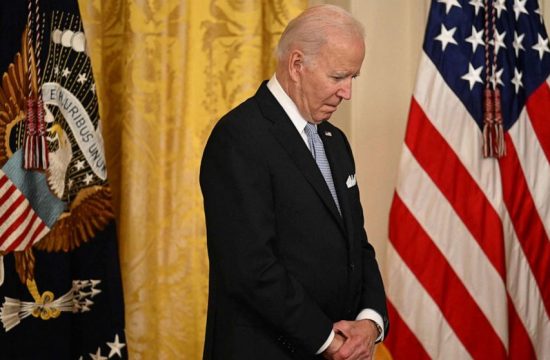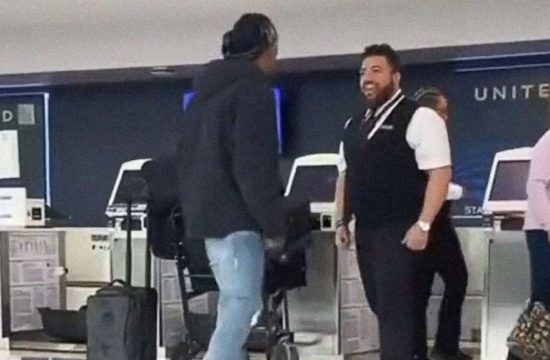This spring, one of the most scrutinized swing states in the country got a taste of what elections look like when an overwhelming majority of voters are afraid to physically head to the polls.
In addition to the long lines seen across Wisconsin during its hectic April primary, the state also saw a deluge of absentee ballots. That influx, according to a report by the Wisconsin Election Commission, came with a glaring ballot rejection statistic: Nearly 23,000 votes cast by mail in April were tossed because they were late or filled out incorrectly.
That number stands out in the battleground state, because it’s higher than the razor-thin margin of about 22,000 votes that gave Wisconsin to President Donald Trump in 2016.
Wisconsin’s ballot rejection rate in the April primary was just under 2%, which isn’t unusually high compared to previous election years, according to the Wisconsin Elections Commission. But as absentee voting gains popularity in the age of coronavirus, a similar rejection rate of 2% in November could leave 35,000 ballots left uncounted.
Rejected mail-in ballots are unlikely to be the deciding factor in the 2020 election — but they could factor in to the result, according to Mike Wagner, a journalism professor who works with the Elections Research Center at the University of Wisconsin-Madison.
“This is one of those elections where there are probably 19 things that could move a small number of votes in one way or another,” Wagner said.
“There’s not any one thing that’s going to determine the election,” he added, but rejected ballots are “one of the things that could matter.”
It’s not new for Wisconsin to give presidential campaigns and political junkies anxiety. In three elections since 2000, the winner there has been decided by a percentage point.
But this year, the Wisconsin Elections Commission is preparing for a presidential election that will be significantly different: Whereas less than 10% of voters cast their ballots by mail before 2020, over 60% did in April, according to the commission.
“Looking ahead to the remainder of 2020, the WEC staff anticipate continued high demand for by-mail absentee voting, even if the COVID-19 pandemic begins to subside,” the commission wrote in a 47-page review of its spring primaries.
“If voting patterns from April hold true, the state could see more than 1.8 million requests for absentee ballots by mail [in November]. This kind of volume would present terrific challenges for Wisconsin election officials at all levels,” the commission wrote.
In a statement on Thursday, Meagan Wolfe, administrator for the Wisconsin Elections Commission, said the commission was confident it had made the necessary improvements to its voting plan, given the challenges ahead.
“We want to make sure every voter who is eligible to vote this fall can do so safely and securely,” Wolfe said. “We learned a great deal from our elections in April, May and August and believe we have solid plans in place for November.”
There are challenges that come with increased mail-in voting. Election fraud is not one of them
Despite the challenges the Wisconsin Elections Commission anticipates with an increase in mail absentee voting, none of it is expected to lead to an increase of the already-rare instances of voting-related fraud in the state.
“Increased mail-in voting is not at all likely to negatively affect the integrity of the vote,” said Wagner. “Voter suppression efforts are far more common and far more dangerous.”
Since 2016, clerks in Wisconsin have only reported 100 cases of fraud cases to the commission in elections where millions of votes were cast. A mere 21 of those cases involved absentee ballots.
But the facts did not stop Trump from alleging “tremendous potential for voter fraud” with expanded mail-in voting operations in a tweet the day after Wisconsin’s fraught April primary. The president has continued to push that narrative for months, claiming without evidence Saturday that lost ballots and fraud were “happening all over the place.”
The president has not offered any evidence to back up the accusations, and there’s no data to bear out fraud claims linked to mail absentee ballots in Wisconsin, either.
“Voter fraud is extraordinarily uncommon,” Wagner said.
Some Republican officials have also warned about the potential for a blunted GOP voter turnout this year if they choose not to trust the mail. If Wisconsin sees a surge of COVID-19 cases or voters feel unsafe on Election Day, they might not head to the polls and will have already missed their chance to vote absentee.
“I’m hearing that from Republicans — that they’re concerned that Donald Trump’s attack on mail-in voting might actually suppress his own base,” said Charlie Sykes, a longtime conservative talk show in the Badger State.
On the other hand, if more Democrats than Republicans vote absentee, rejected votes could have more of an effect on Biden than Trump, Wagner said.
“Usually, the partisan asymmetry in these methods aren’t so huge that rejected ballots would be a decisive factor,” he said. “But in this election, the possibility exists that the asymmetry, where Democrats are doing more voting by mail, could have a real effect on who wins in states that are really, really closely contested.”
What Wisconsin voters need to know if they want to vote absentee in November
It’s important to note that just 1.77% of absentee ballots were rejected in April, a percentage that’s on par with elections prior to the pandemic. Nevertheless, staying informed and making a decision early is key to avoiding a messy Election Day, Reid Magney, spokesperson for the Wisconsin Elections Commission, said.
“Time is our friend here. The sooner you act, the sooner you make a decision, the better,” said Magney, who attributed some of the ballot rejections to voters who didn’t send their ballots back on time to be counted.
“The big problem in April was people requesting absentee ballots, right up against the deadline and then not getting them in time to be able to return them,” he said.
Another major problem was voters filling out their ballot incorrectly. According to an investigation by Wisconsin Watch and APM Reports, more than 13,000 votes were rejected in Wisconsin’s April primaries because of an often-missed requirement for voters to have a witness sign the ballot envelope with both a name and address.
Come November, Wisconsin voters can help check any mistakes if they follow up with their local clerk’s office once their ballot is delivered. Ballots will be given “intelligent barcodes” that let clerks and voters track them through the mail.
Voters can also drop their ballots off at polling places or vote early, in-person at a clerk’s office, which would allow the clerk to catch any mistakes in the moment and have them fixed.
“We want citizens to choose the option for voting that works best for them. For voters who choose to vote absentee by mail, we want to be sure they have the information they need to navigate that process,” Wolfe, the elections administrator, said in a statement. “Of course, every voter who is eligible to vote in the state can also vote early or in person on election day.”
Some experts, including Wagner, suggest the former — in-person early voting — as the best route for avoiding ballot errors or postal service delays, while also minimizing potential time spent inside a polling location.
“In-person, early absentee is, I would say, the safest for health and democracy,” Wagner said.
But it’s also “extraordinarily burdensome for voters,” he warned.
The early voting period can be different depending on where Wisconsin voters live. That period could begin as early as Oct. 20 and end as late as Nov. 1, but voters have to check with their individual clerk’s offices because it varies.
Early voting also requires transportation, which can be a barrier for low-income voters. Because of that, Wagner said, access to early voting in the state tends to be divided along racial and socioeconomic lines.
“In research we’ve done, we found that it’s white, well-educated voters who are more likely to do this kind of thing, whereas Black and Hispanic voters in Wisconsin tend to face more barriers to being able to vote,” Wagner said.
The Wisconsin Elections Commission, for its part, has begun a voter information campaign that aims to explain each voting option to all registered voters, including a mailer that will go out to 2.6 million Wisconsinites in September.
“That mailer is basically saying for November, you’ve got three options to vote. First is going to the polling place on Election Day. The second is going to your clerk’s office or satellite location in the two weeks before the election to cast an in-person absentee ballot. And the third option is to request an absentee ballot from your clerk by mail,” Magney said.
While Wisconsin voters can ask for an absentee ballot up until the Thursday before the election, the U.S. Postal Service has warned that wouldn’t be enough time, advising that it takes at least seven days for ballots to get through the mail. The Wisconsin Elections Commission recommends requesting an absentee ballot no later than Oct. 27. The deadline for Wisconsin voters to return their absentee ballots is 8 p.m. on Election Day.
The upshot: “Return your ballot as soon as you can. Do not wait,” Magney said.











